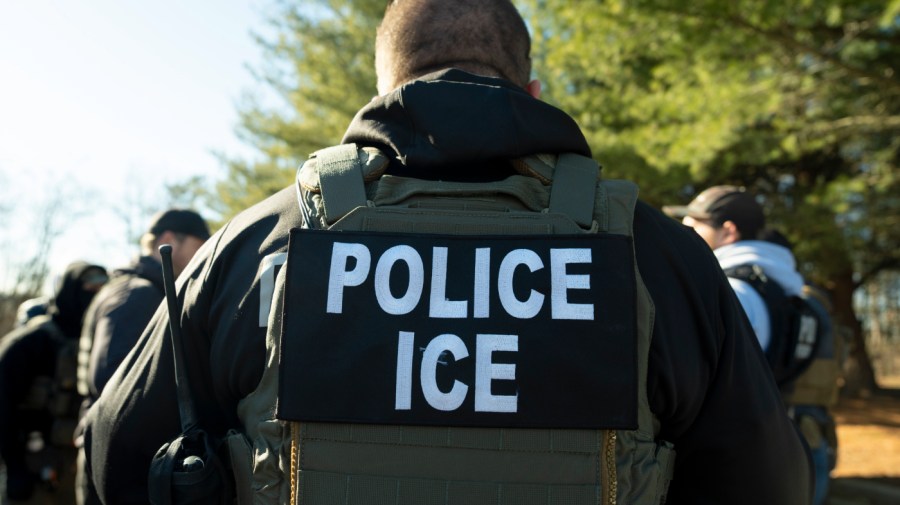HONOLULU (KHON2) — It’s a relationship that’s sparked protests in other cities; and now, it’s raising alarms across Hawaiʻi’s counties. Concerns are mounting over growing ties between county police departments and federal immigration agencies like ICE and Homeland Security Investigations.
Community members are warning that such cooperation could lead to increased surveillance, arrests and deportations of Hawaiʻi community members. As tensions rise, advocates are urging the public to know their rights.
This includes the legal ability to observe and document ICE activity in public spaces as a way to hold law enforcement accountable and protect vulnerable members of the community.
The Hawaiʻi Civil Rights Commission has signed on to provide access to documenting ICE arrests and police observation. Always remember that it is illegal to interfere with the work of law enforcement.
According to Witness Media Lab, you have the right to watch and record ICE arrests. This includes outside courthouses, where many arrests happen. But you need to know what to look for, where to stand and how to protect yourself and the people around you.
So, it’s important that you always use good judgment. You can click here and here to access more information on what is provided below.
1. Why filming courthouse arrests matters
In 2017, ICE arrests at New York courthouses increased by 1,200%. That same year, ICE began arresting parents in Family Court and immigrants in Human Trafficking Intervention Court. Some people were arrested even after charges were dismissed. Others had mental health issues or were survivors of family violence.
Filming helps show what is happening. It helps track patterns and push for policy change. WITNESS, Immigrant Defense Project (IDP) and New York Civil Liberties Union (NYCLU) created resources to help people film safely and legally. The IDP says, “Filming and sharing these stories helps us to track ICE tactics and trends.”
2. Where you can film ICE
You cannot film inside New York City courthouses without permission. But you can film outside. You also have the right to record in public spaces. That includes sidewalks, streets, and the area around a courthouse.
Federal courts have said that filming law enforcement in public is legal. That includes ICE and other immigration officers. The IDP says, “Law enforcement officers cannot lawfully arrest people simply for filming them.”
3. How to record arrests
In most places, you have the right to film an arrest, as long as you do it safely and responsibly. Courts have ruled that people can record public events, including police activity, but only if they don’t interfere with what’s happening.
You must stay a safe distance away and listen to any instructions from officers. Blocking, arguing or getting too close can be seen as interfering, and that could get you into trouble.
To get the best video, hold your camera steady and record horizontally so you can capture a wider view of the scene.
Tips for filming an arrest safely and legally:
- You can film from a safe distance.
- Do not block officers or get in the way.
- Follow any requests to move back.
- Hold the camera steady.
- Film horizontally (sideways) to capture more of the scene.
Focus on the officer. Avoid filming the person being arrested unless necessary. Record:
- Paperwork.
- Badges or uniforms.
- Weapons.
- Vehicles and license plates.
- What officers say.
- Where the arrest happens.
- Signs or landmarks to show location.
- Surveillance cameras nearby.
Use tools to blur faces or license plates before sharing. That helps protect the people in the video.
4. What to do if they tell you to stop
You can stop or keep filming from farther away. If your immigration status is at risk, it might be safer to stop. Even if you stop filming, write down what happened. Record the date, time, location, number of officers, what they wore and how they identified themselves.
The IDP said, “There is great value in bearing witness to an incident even if you don’t film.”
5. How to stay safe and protect your footage
Use a passcode on your phone, not face ID or fingerprint unlock. Law enforcement can’t force you to share your passcode without a court order. They can pressure you to unlock with your face or finger.
Write a trusted contact’s number on your arm or memorize it. Avoid saying anything about the person’s immigration status. Don’t show their face unless needed. Think carefully before posting anything online.
6. What to do with your video
Before you share, ask a lawyer or advocacy group how to do it safely. Do not edit or rename the file. Save the original footage in a safe place. The IDP said, “Video is best utilized as a tool to expose abuses, corroborate other forms of evidence, and create change when you work with others.”
You can click here for more information on the Hawaiʻi Civil Rights Commission.
Filming ICE is legal in public. It is also powerful. It lets the public see what is happening, and it helps protect the people most at risk.
